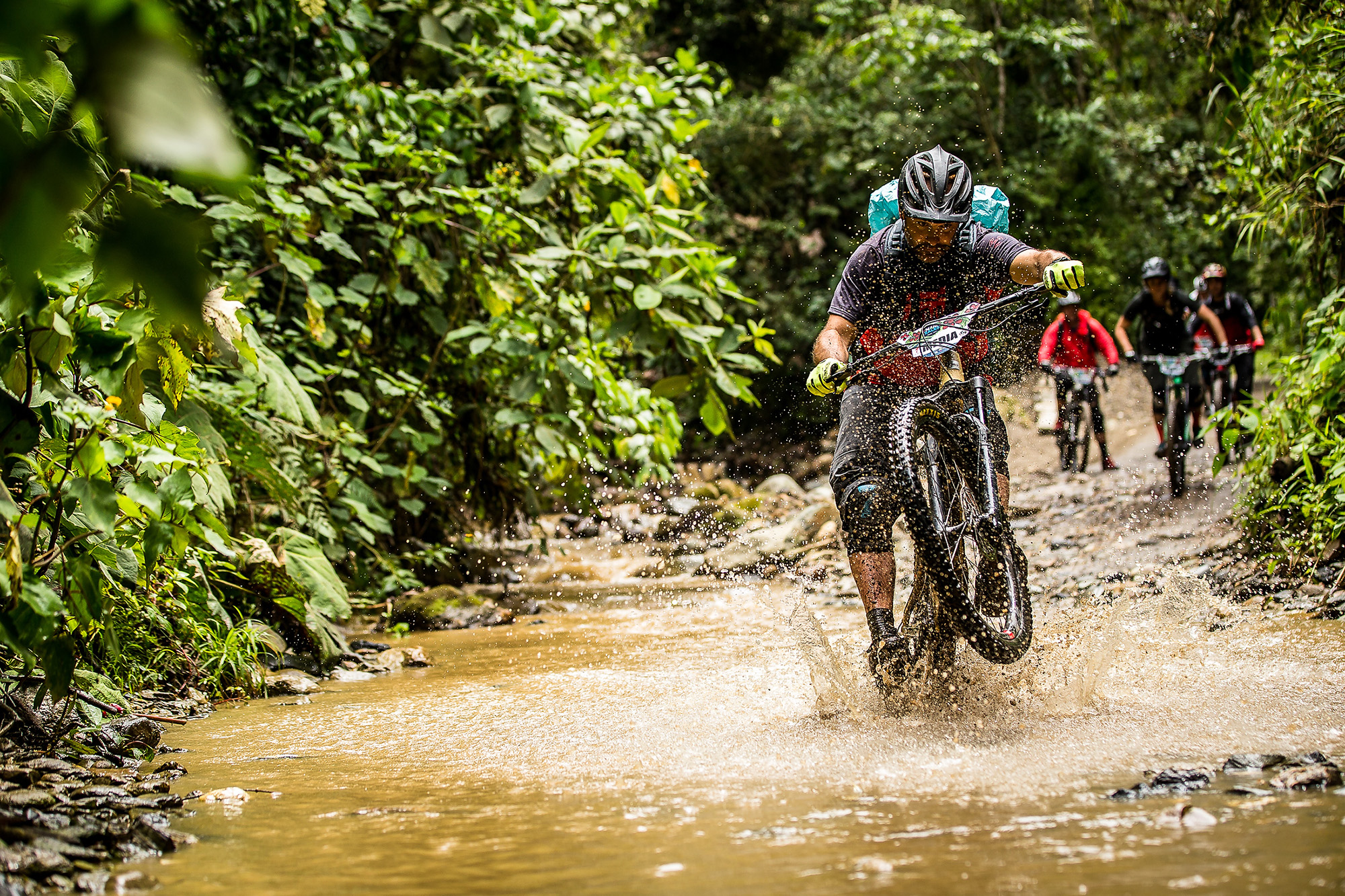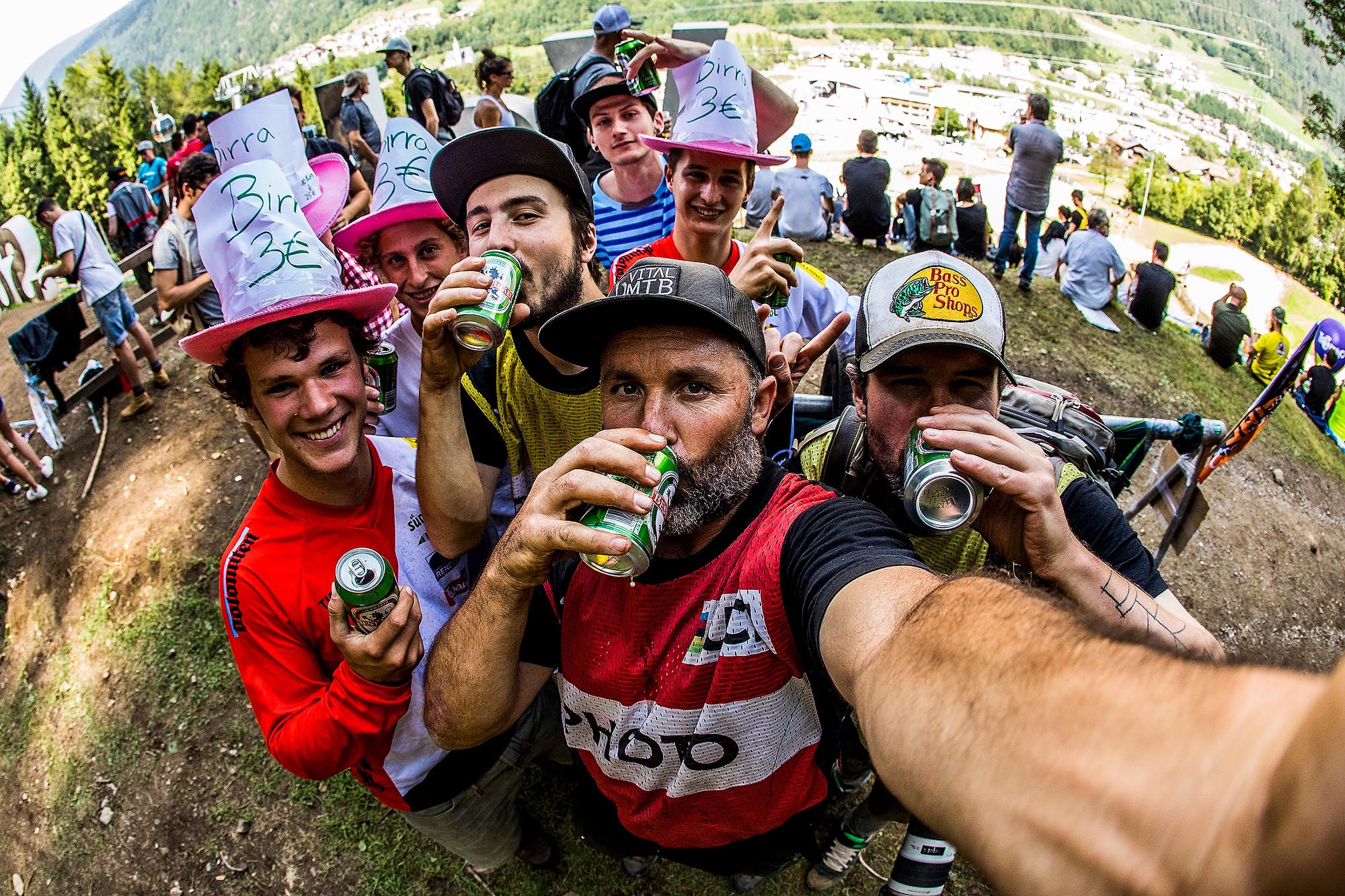He surely needs no introduction. Arguably the most talented global mountain bike photographer of the modern generation. We’ve been blessed to have been featuring Sven’s work in the mag for well over a decade and during that time his shots have featured on countless [R] front covers and big glossy spreads. But who is Sven Martin and how did he become the industry leader that he is?
Whilst he was out in Oz for the recent RedBull Hardline event we took the opportunity to sit down and chat with him at length about his career to date. Enjoy the tale of the mag’s close friend Sven.
Images // Boris Beyer, Dave Trumpore, Sven Martin, and many, many more.
[R]: Lets start right from the beginning, how does a pro skater from South Africa go on to become the most recognized and celebrated mountain bike shooter on the planet?
Recognizsd because I was fat and bald?
Haha I was referring to your photos actually!
Well yeah, I was a skater originally from South Africa and my wife, Anka, and I moved out to California around 1999 because she wanted to be a fashion designer. So, she went to fashion school in California, and I was like, just trying to live the skateboard dream, mixing skating and photography to make ends meet. One day, Anka bought a mountain bike and she started getting into that scene and would go off some weeks to ride DH over in Big Bear. One day, I went to watch her race at an early amateur event and it looked like fun. So, I thought I’d give it a go as well and I went out and bought my first MTB. I paid $599 for a Specialized FSR Expert and I remember thinking that was the most expensive crazy investment ever! Then I got more and more into it and eventually we went on to start a race team with backing from some companies around SoCal, and off it all went.
My dad was a photographer by profession and as a child, from as young as I can remember, I always had a camera in my hand.
When did the photography side begin for you?
My dad was a photographer by profession and as a child, from as young as I can remember, I always had a camera in my hand. We used to go for family trips to game reserves, which were like native parks about the size of Tasmania – like a zoo without fences, full of wild animals. So anyways my dad would give us his film cameras and he taught us all about aperture and shutter speed and balance gate and then how to track birds using manual focus.
Wow what a childhood you had!
Yeah, it was cool. Then, on top of that my mum was an art teacher and so during those trips she’d explain to us all about composition and how to properly frame shots. Photography was my first ever passion. Then, later on my brother and I got really into skateboarding. He started up a skate mag and we used to go on these skate trips all around South Africa and we’d shoot a bunch of photos to document the trips in order to bring sponsors in and fund the whole thing. Eventually, shooting skate lead me to shooting surf and snowboarding and it just totally became my lifestyle.
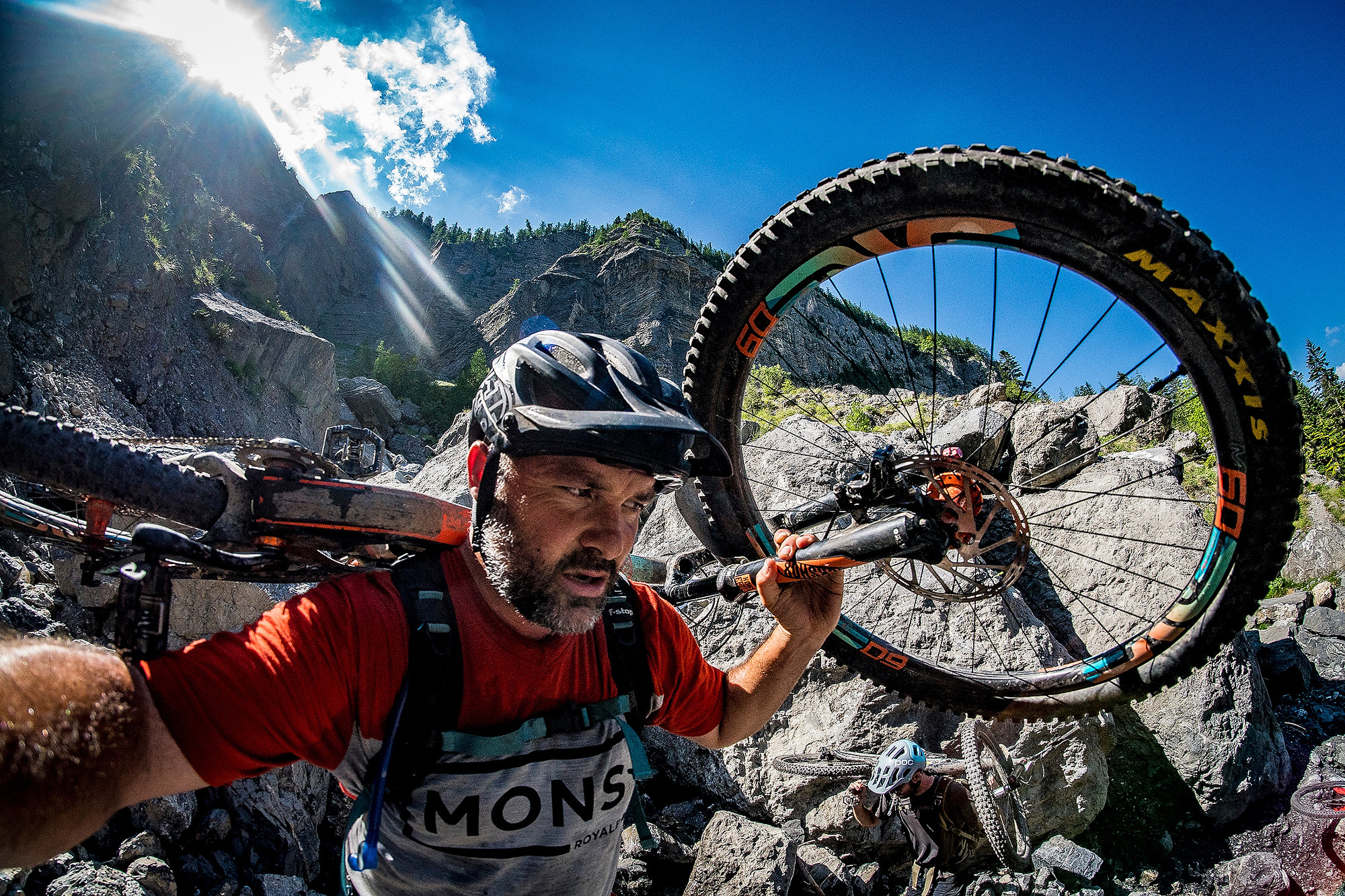 So, I guess it was only ever a matter of time before you started to shoot MTB as you got involved in that scene.
So, I guess it was only ever a matter of time before you started to shoot MTB as you got involved in that scene.
That’s right. As far as shooting the racing stuff started, that actually began because we started to go to all these big races and cool venues and I was only just fast enough to qualify into the finals, which meant I’d always be one of the first riders to come down the hill for my race run. So, as soon as I was done I’d jump off my bike, not even get out of my race clothes, grab my camera and shoot the fast riders crossing the line or down near the bottom of the tracks. Some of those photos would end up going to our sponsors and stuff like that but, eventually a few media outlets started seeing my work and then I’d start providing shots to them as well.
Was that just at local races and NORBA’s (the American National series back then which was a really big deal)?
NORBA’s for sure but also World Cups. I raced my first World Cup in 2003. Shooting the races whenever I wasn’t on the bike made journeying to those races so much more worthwhile.
How many years did your pro racing career last before shooting full time took over?
Well, my claim to fame back then was that I qualified for every single World Cup I entered between 2003 and 2008. But by 2008 I’d picked up a few regular media outlets wanting my shots. In fact, I think that was the year I had my first shots in [R]evo Mag, eh?
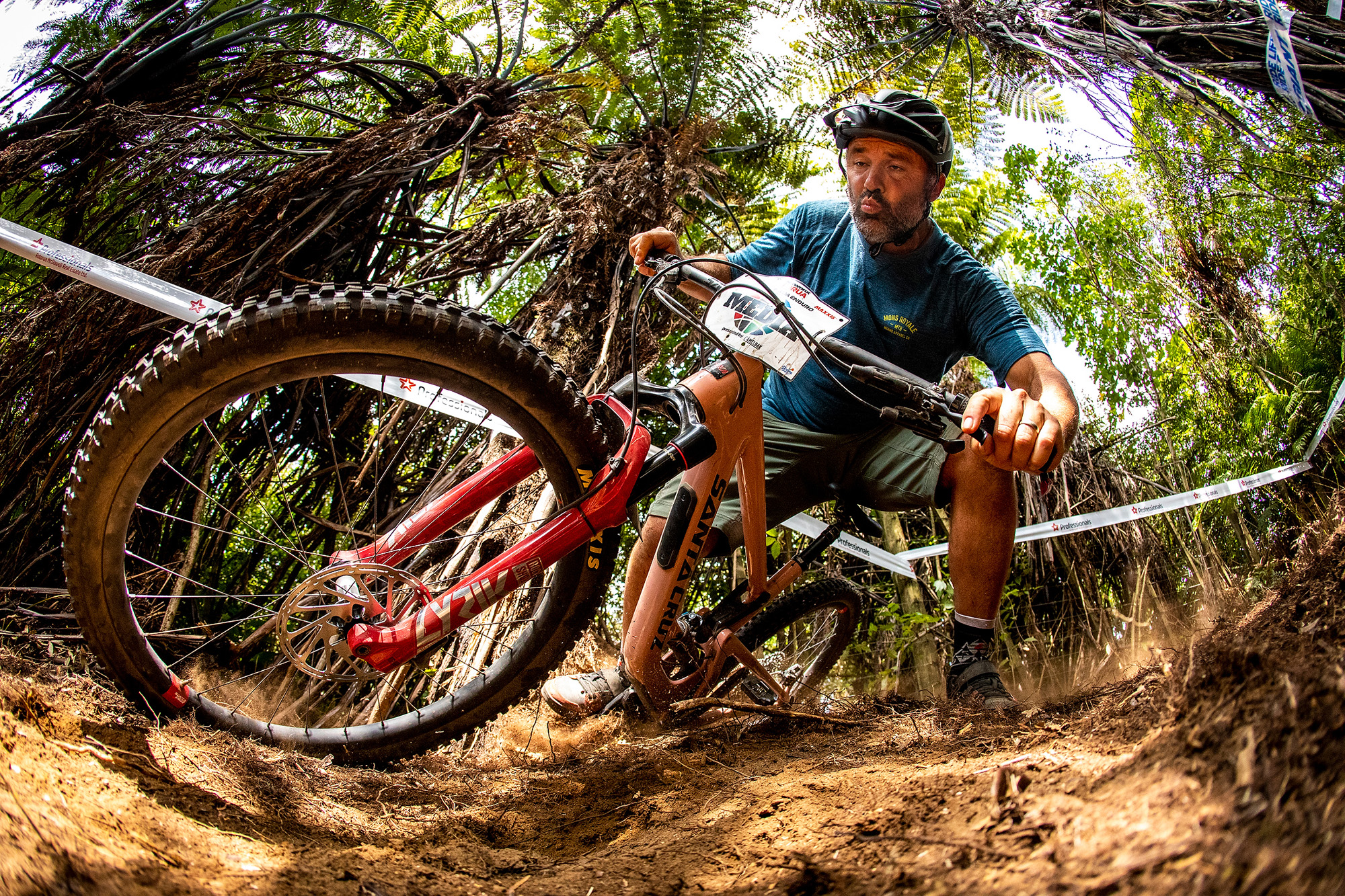 It feels like you’ve been shooting for us forever to be honest. But, yeah, probably around then was when you came on board with us.
It feels like you’ve been shooting for us forever to be honest. But, yeah, probably around then was when you came on board with us.
Makes me feel old! I guess one of the things about those early years of being both a racer and a shooter was that gave me the opportunity to meet and mingle with so many riders at the races and even more so outside of the races, hanging out between weekends and what not. And when we’d hangout I’d be riding but also shooting, and I’d get to shoot all of this cool lifestyle stuff which became really popular.
I forged really good relationships with so many of the Aussie crew back then too like Hill and Rennie and Kovarik and Graves and Bryn and the list goes on. When I’d shoot with those guys, it was really natural because we all knew each other super well, I was a part of the scene, and so it would make for some great shots.
And then eventually that helped to propel my career from riding to focusing just on shooting as I began to get paid retainers to shoot a few shots for pro rider’s teams and sponsors.
Was it a tough decision to hang up your race helmet and dedicate yourself to shooting?
Not at all, because I was still a part of the scene. And I was only hanging up my racing helmet. I was still wearing a helmet and riding bikes more than ever; I was just starting to get to follow my passion rather than making no money trying to be a racer!
That’s awesome. Can I ask if you ‘hit it’ right away first year and started making decent money, or did you still have to chip away at it for a while to really make a living from shooting bikes?
My success in my first full year was actually that I made a solid loss from focusing on photography.
[R]: What do you mean by that?
If you’re going to fully commit yourself to trying to launch a new self-made career path, then most likely you’re not going to make money from it straight away. But you’re going to learn and build and dig deep, and that’s what I did during those first couple of years. Stepping stones to success. Everyone wants IT, especially in the bike world, everyone wants IT and wants it to be easy, but it’s not like that. You have to pay your dues and you’re going to not make money for a long time, and maybe you never will make money.
Words of wisdom right there mate.
Ha, so yeah, it definitely took me a few years to build to the point that I was able to get to all the races and all of the events and actually walk away with money in the bank. But that made it feel so much more rewarding when it did start happening. And to be honest it still makes it feel good now. Knowing that I invested the time and hard work to slowly build relationships with brands that would then become my strongest clients – and many of them still are to this day. I probably ran at a loss for a few years, then maybe just broke even for a couple more, but eventually people see that your work is quality and consistent and that you’re good to deal with, and then the phone just starts to ring and it all goes from there.
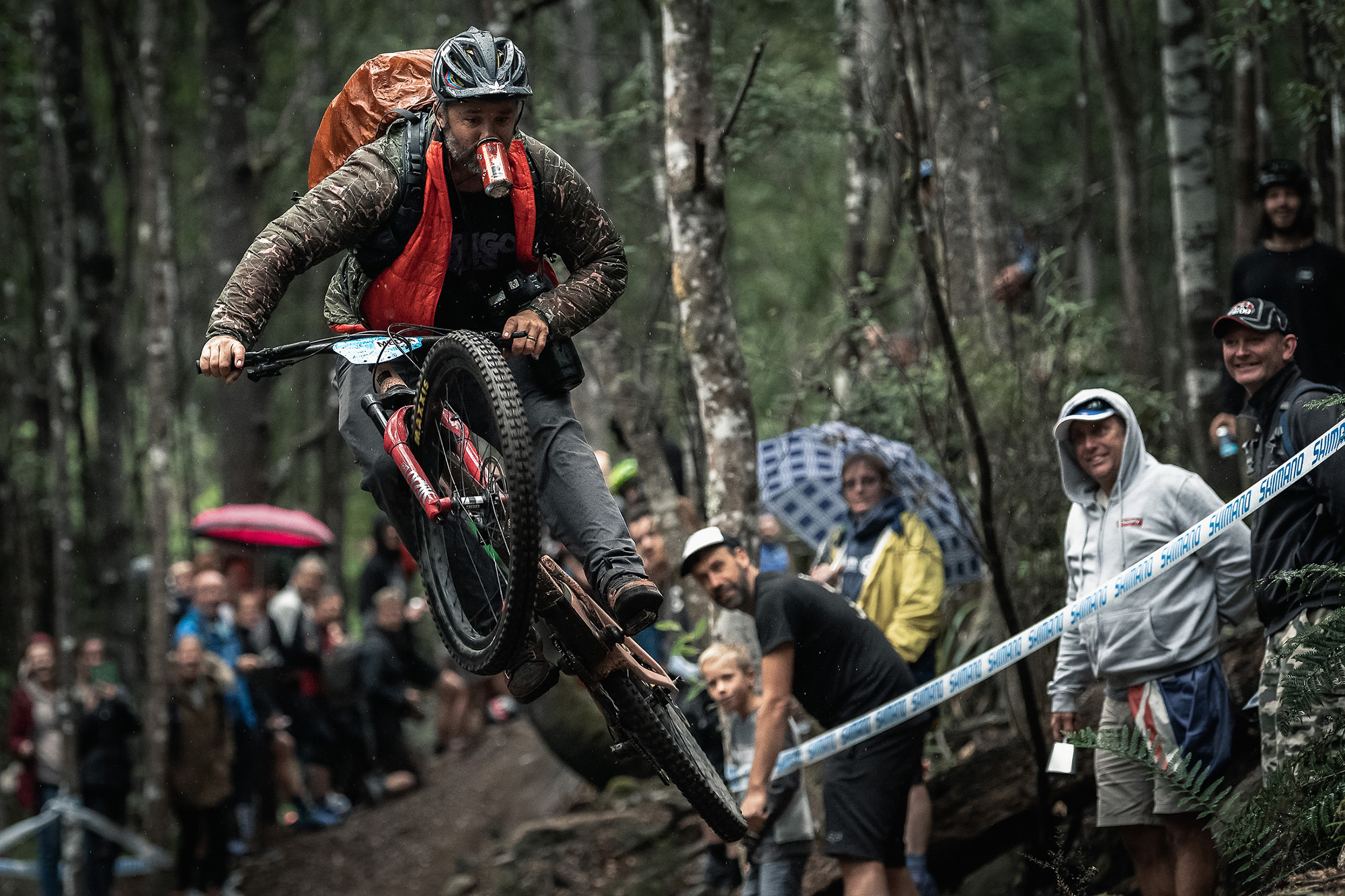 And the rest is history! So, without expecting you to disclose too many private details, could you give us a general idea of where the main revenue stream comes, for a pro mountain bike photographer in the modern era?
And the rest is history! So, without expecting you to disclose too many private details, could you give us a general idea of where the main revenue stream comes, for a pro mountain bike photographer in the modern era?
There are a lot of different ways of doing it. You can go the one route where you are working for like a big team or just one big brand, and in that case at an event you’re only allowed to tell one story. Maybe you won’t find so many photographers doing that these days but, certainly for the video guys a lot of them are locked in with one of the teams as their client. So, then the team takes care of them with all their flights and accom and they’re basically treated as a regular staff member on the team which works great for a lot of those guys because basically, they don’t have to put their hand in their pocket or arrange anything they just focus on their one job. So, you can make a living that way. Or like I do, you can be in complete control and be a freelancer, independent contractor and work for multiple clients. And then, you can pick and choose who you want to work for, who you have capacity for, and work for multiple teams or brands or magazines instead of just one.
The big difference then though, is that you have to take care of yourself to get there and get around. You arrange your flights, accom, transfers, meals, absolutely everything. You’re running your own business. And to give you an idea of the overheads to do that during a regular season, or year, we’re spending over $100,000 just to cover the year.
So, you need to be quite savvy if you’re going to be a freelancer. And also, it sounds like you’re taking on quite a lot of financial risk.
Yeah, I guess you can choose to make it as easy or as hard as you want. For me, I love what I do and I’m fortunate that I get to work with some amazing brands and people. It can be hard, long days, uncomfortable conditions, but if you’re passionate about what you do then none of that stuff matters.
Unreal! How many events will you cover in the average season or year?
It varies. And it tends to grow. Right now I’ll be at every World Cup. But keep in mind that isn’t just 8 downhill World Cups. I cover the XC as well. Often those events are separate and the XC season kicks off earlier and in all sorts of countries across the planet. Add onto that I’m at all of the Enduro World Cups as well. Plus of course all of the Crankworx rounds. And special events such as the RedBull stuff. And then I do quite a bit of private stuff for brands in the off season and I’ll usually do some film shoots as well, like on the bigger MTB films they like to get a photographer to tag along for a few days here and there in the more epic locations.
You’ve really got your work cut out for you! Can you give us an idea of the logistics of getting around to all of those events?
It’s a lot, but to be honest it feels like it used to be a lot more. We’ve got it pretty dialed now. We used to do a lot more traveling back and forth, but then it made sense to make ourselves ‘bases’. So, now we have a place in Italy and we also have our house in the southern hemisphere down in New Zealand. It makes everything a lot more efficient when you have more than one base, and for a lot of reasons.
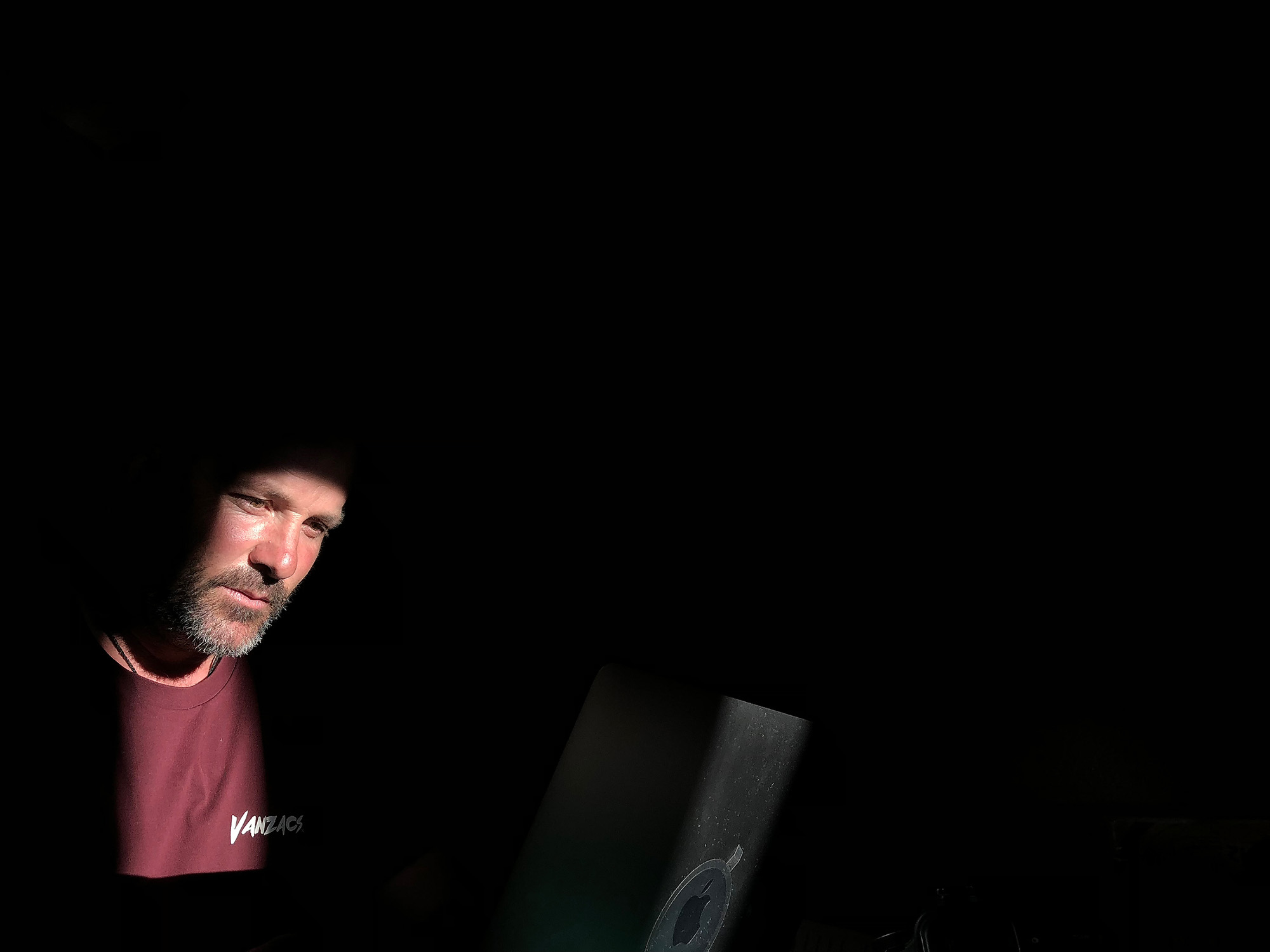
I guess that way you’re not always just floating?
Exactly, a lot of the races are in Europe. So, before we’d have to stay in hotels and have hire cars and all that, whereas now we have our own vehicles which we can drive to a lot of places and then cut down on needing to hire and cut down on how long we have to be at places, hotels, all that.
Lets change direction a little bit. Let’s talk about your shooting style and what it is that makes an amazing photo in your eyes?
I think it’s not, should not be, in my eyes. It should be in the eye of the beholder. I don’t shoot for what I like, I shoot for what I think they’ll like. As far as style goes, it changes. It is determined by the brief that I’m shooting for. Some weekends I’ll be shooting editorially. Like documentarian style. Telling the stories objectively. And then other weekends I’ll be shooting commercially to capture specific things for a brand to use in an advertising campaign or what not. I actually really like having that variety as it keeps it interesting, and it keeps me always thinking.
There’s a lot of bases to cover.
Of course. But you’re doing it even at one spot, sometimes even at the same corner, you will track focus from wide lens then switch to a second camera angle with a fisheye so you can be right up in their face. You’ve always got to be thinking, reactive, the riders are going past so quickly, and you’ve got a list of what you need to capture in your head so you’ve just got to nail it. In terms of approach, and set-up, there’s a lot of difference between photos to fill up an Instagram post or when you’re shooting for a double page spread in a magazine. Both are equally important actually.
But getting back to the other part of what you asked, what makes a good photo, its having the ability to resonate with the viewer and have a connection or evoke an emotion.
Yeah, you’re definitely correct there.
Sven: So that’s what I try to do. And obviously because I’m not shooting video to capture the events, to tell the story I need my photos capture the essence of the whole story. And often that somewhat falls by the wayside.
That’s what sets you guys apart though, it would be fair to say – being masters of your art form. These days there aren’t many photographers that only shoot stills. You never got tempted to start shooting video as well?
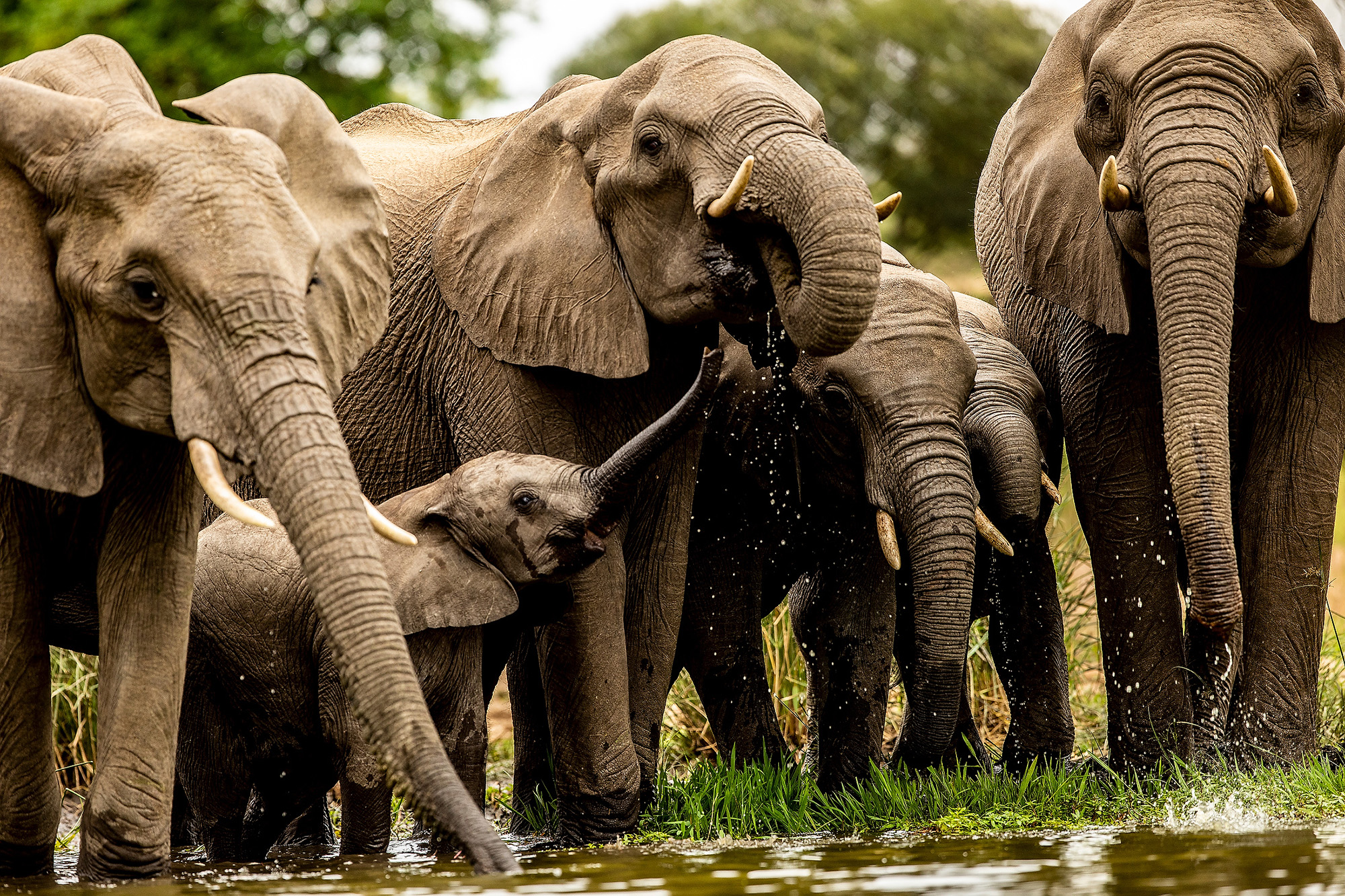 No. I am a photographer. That is my entire focus because I want to do it as well as I can.
No. I am a photographer. That is my entire focus because I want to do it as well as I can.
I love that! Especially as in this day and age where it feels like we all need to do everything to stay relevant. In terms of being a media brand. You can’t just do this, or just do that, you need to be seen on all fronts and for sure that means diluting down the full potential of what we can create if we’re fully focused one thing.
Exactly. You’ve got the mag, but then you’ve got to have a website presence as well and social media and video content and all these other things.
It’s a shame sometime in that sense. Of course, it is great to have as big of an audience as possible and as you mentioned before, to try to connect and resonate with as many people as possible, and so we have to be active on all those fronts. But, definitely to do that you’ve got to be taking from somewhere else as there’s only so much one person can do, to the best of their ability, and there’s limited time and resources. For us, the printed magazine is always our primary focus and that’s purely fueled by the stoke of our readers and the impact that each new mag we deliver has.
There you go, that’s what makes your magazine so good. True quality and passion.
Well, and of course we’ve got you!
Haha! I always love working with you guys and seeing my work in print.
Let’s get back to talking about your craft. How many photos are you taking on a standard day at an event?
Yesterday I took 5000 shots. That number is a little less than a standard race though, because yesterday, at Hardline, the riders only did say 3 laps and there’s only 20 or so riders so it was limiting. At World Cups I’ll shoot anywhere from 4 to 6000 shots per day.
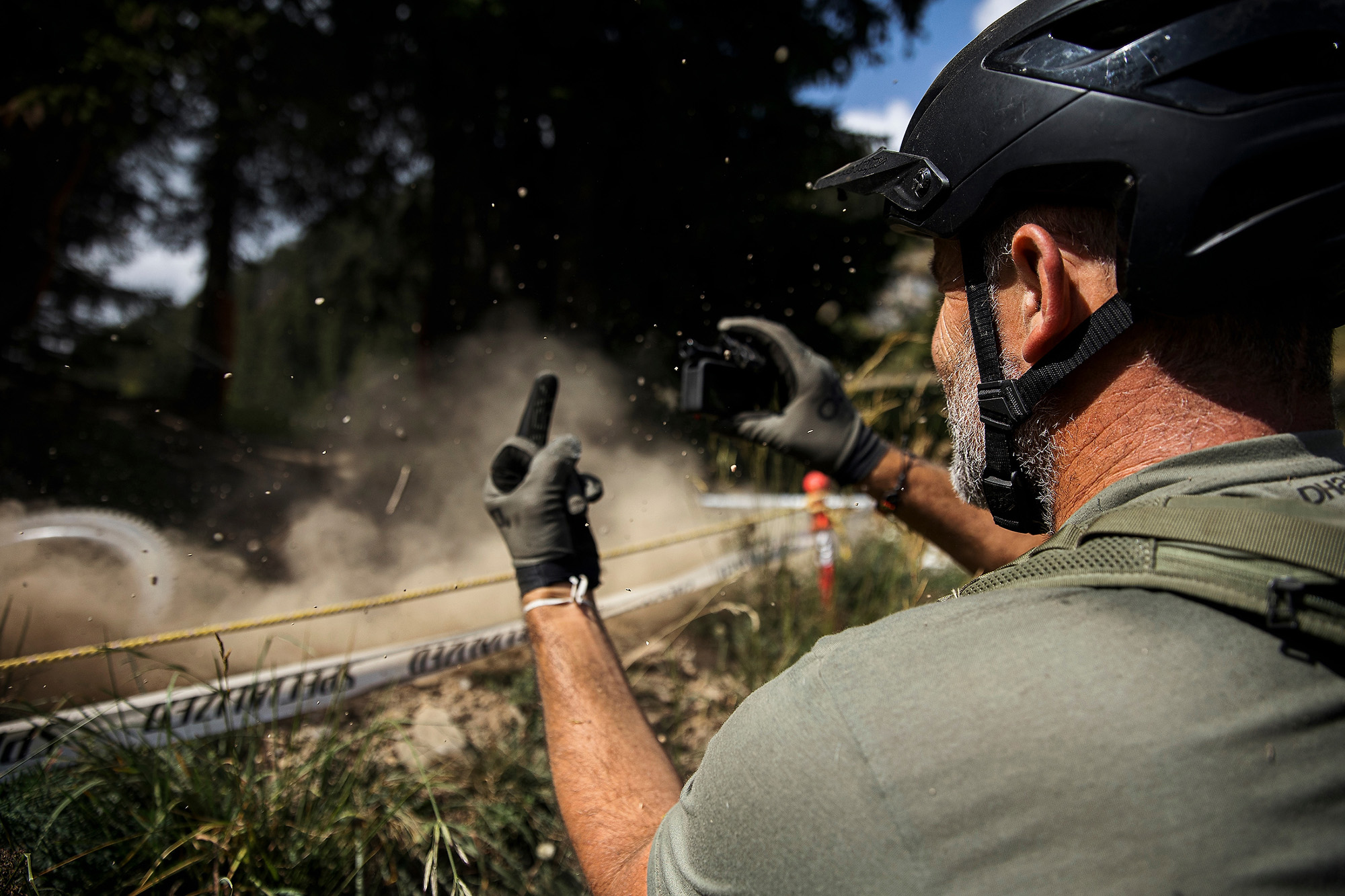 Holy shit, and then you’ve got to go through and edit and process all those?
Holy shit, and then you’ve got to go through and edit and process all those?
That’s what it takes! I’ve developed good systems and ways that I do things now to make it easier and quick, on the editing side each night, but it’s still a lot of hours. And I go through a lot of computer keyboards hitting the same couple of buttons constantly.
Ha, I bet! How do you manage to shoot all day, then edit and compile shots into folders, then I guess you’d have to get them out to everyone.
Yep. It depends a little bit as well. Like, there are some things I do right after a race to get certain shots out before I have to go through and dump all 6000 shots to start editing. I tend to know the spots of the track or a certain point where I shot a few specific shots that I know are golden, so I’ll do a quick scan through those and deliver a small handful to the team or the brands that need them right away. There are clients who are paying a premium for early deliveries. Which is a service you can’t offer to everyone.
Yeah of course. It’s actually pretty wild what you guys are able to do now that I stop and think about it. You’re up on the hill shooting all day and then as soon as the last riders cross the finish line your shots are being beamed out across the web and social media feeds pretty much immediately. That in itself is a crazy logistical feat.
That’s just what it takes!
It’s wild! So, of those 6 or so thousand shots you take each day at an event how many will make it through your editing stages?
It varies, for sure. There are a lot of factors. On average though I’d probably process it down to about 400 to 500 shots that I’ll keep on hand.
Less than 10% far out.
Ha yep, and it’s funny, like if I shoot 6000 photos, there’s like 600 good ones that I’ll keep and of those, there’s maybe 60 that I would like to send to magazines and of those there’s maybe 6 that could, maybe, be a cover. Doesn’t matter if you shoot 100 photos or 10,000 in a day, that ratio always seems to be about the same.
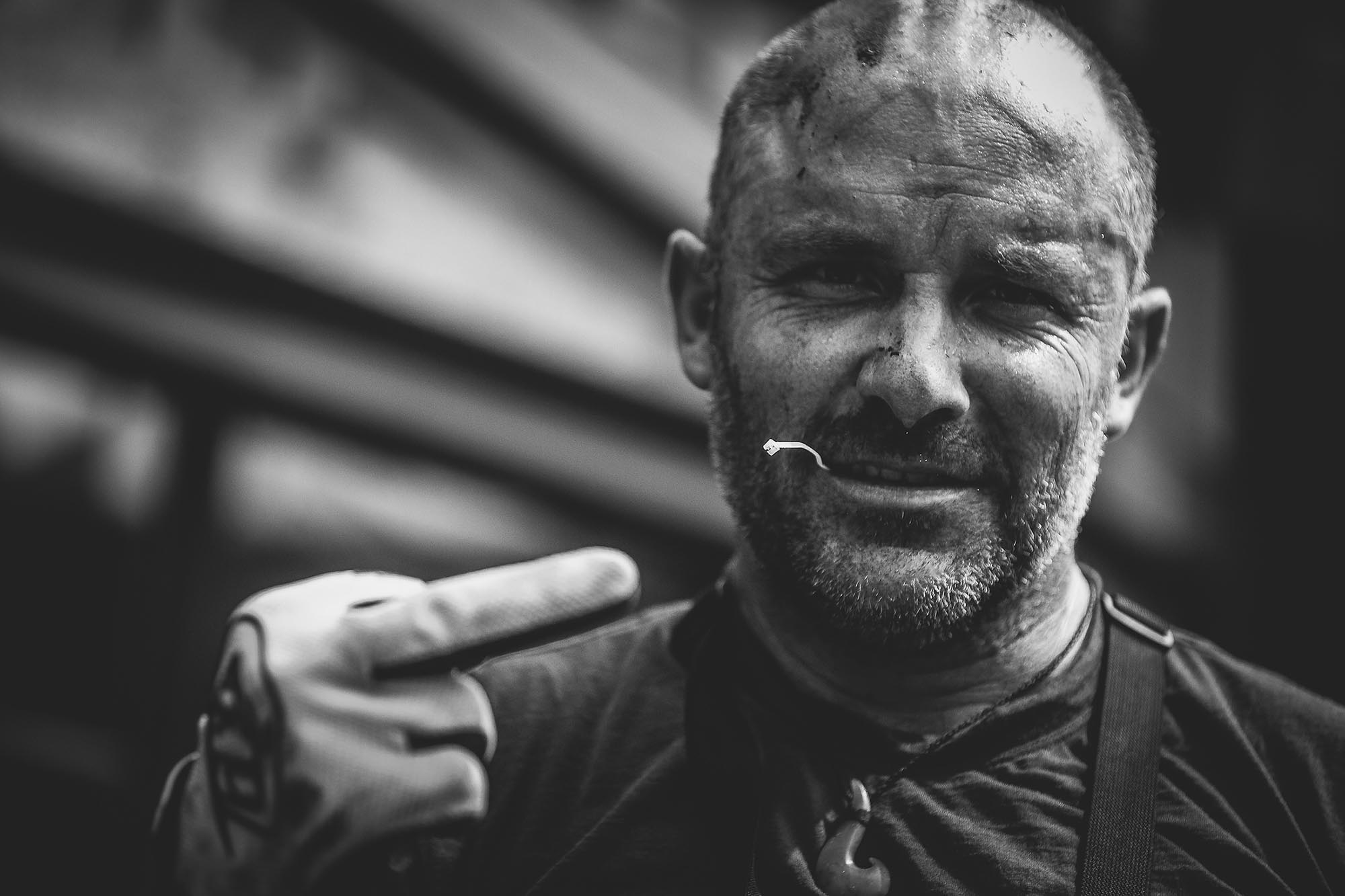 We began this chat by saying that you’re one of the most recognised photographers in all of mountain biking right now. What do you want your legacy to be one day when you step away from the sport. What mate do you hope to have left behind you?
We began this chat by saying that you’re one of the most recognised photographers in all of mountain biking right now. What do you want your legacy to be one day when you step away from the sport. What mate do you hope to have left behind you?
That’s a good question… I can’t really imagine not being at the races. I can’t imagine not doing this anymore, not being around the scene that I love so much and not spreading my passion with the world.
So you’re going to be that 90 year old man hobbling down the side of a World Cup track with a camera in one hand and a walking stick in the other?
Haha, can you imagine that! I reckon I’ll still be riding a SantaCruz too!
Me and you likewise brother!
I’d like to think that it won’t be my name, but my work, that will be remembered. My photos show my passion and dedication to capturing this sport in all its beauty. I hope that my work inspires people, makes people happy. I hope that I do my job justice because I’m so grateful to have this job in the first place. Outside of my wife, Anka, and our little girl Ziggy, mountain biking and shooting photos is all I care about in life.
That’s the best! Mate, thank you so much for taking the time to chat today and share your story with our audience. You’re such an inspiring, a unique and talented individual. Cheers for everything – and keep on doing it! [R]
